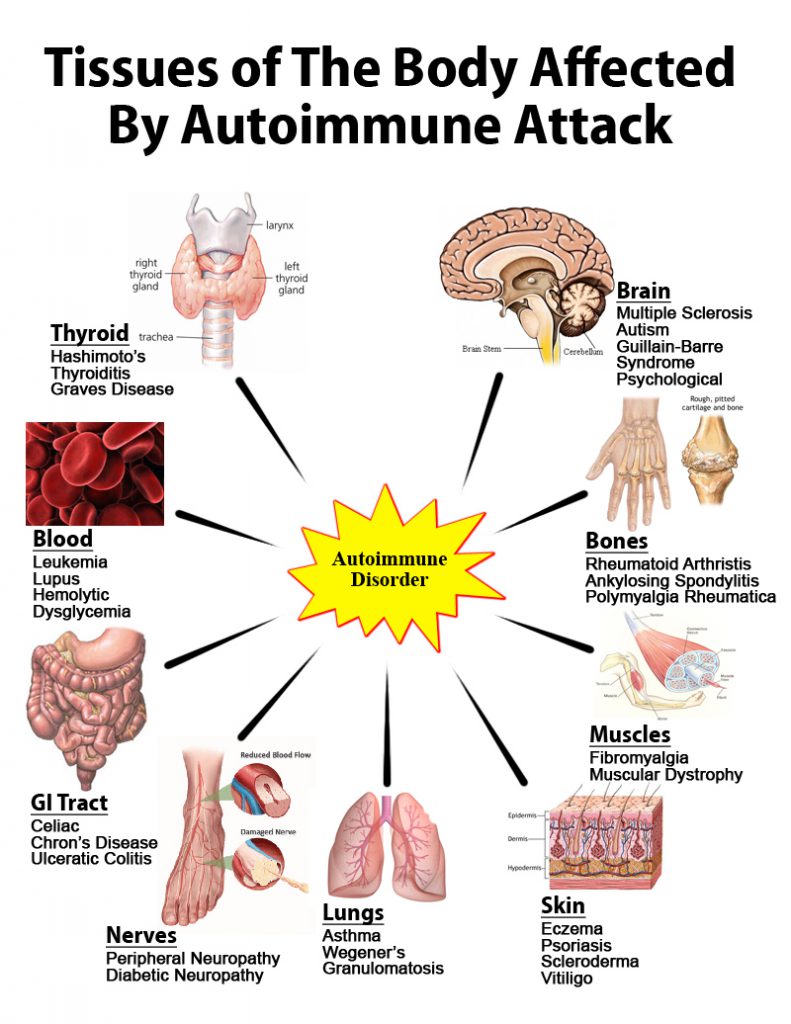
Autoimmune disorders are characterized by symptoms of the bodies immune system mistakenly attacking the body’s own cells or organs. This can show up as a number of autoimmune disease symptoms as shown in the chart.
Autoimmune Disease Symptoms
-
A chronic inflammatory disorder affecting many joints, including those in the hands and feet.
-
An inflammatory disease caused when the immune system attacks its own tissues.
-
An immune reaction to eating gluten, a protein found in wheat, barley, and rye.
-
An immune system disorder characterized by dry eyes and dry mouth.
-
An inflammatory disorder causing muscle pain and stiffness around the shoulders and hips.
-
A disease in which the immune system eats away at the protective covering of nerves.
-
An inflammatory arthritis affecting the spine and large joints.
-
A chronic condition in which the pancreas produces little or no insulin.
-
Sudden hair loss that starts with one or more circular bald patches that may overlap.
-
An inflammation of the blood vessels that causes changes in the blood vessel walls.
-
An inflammation of blood vessels, called arteries, in and around the scalp.
Contributing Factors or “Triggers” of Autoimmune Disease
- foods – foods that cause mild to severe allergic reactions.
- chemicals – exposure to chemicals in your environment.
- infection – a variety of infections such as oral infections associated with root canals, lyme disease, and fungal and bacterial infections that are often associated with sinusitis are just a few examples.
- nutrition – missing micro-nutrients.
Key to Diagnosis is Testing
It seems clear from the above list that testing is required to isolate the trigger(s) that might be causing the autoimmune disorder.
Here’s one way to find a functional medicine doctor in your area.
Self-Testing is another alternative. Here is a source for relatively low-cost testing tools.

